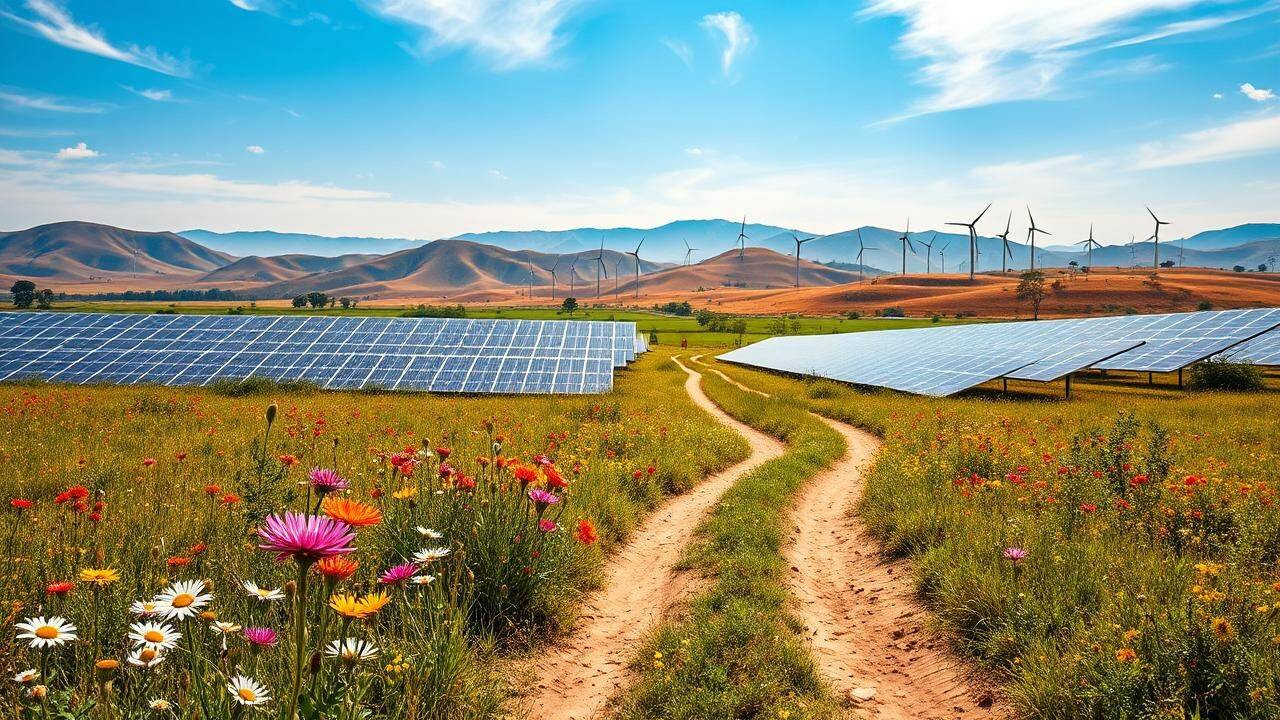India’s power capacity hits 476 GW, with 49% from non-fossil fuels, mainly renewables at 226.9 GW, according to a government report. Solar energy has surged, but coal still dominates at 50.52%. The nation ranks high globally in renewable energy capacity.
India’s Power Play: Are We Really Winning the Green Game?
Okay, let’s talk about power – not the kind that comes from corner offices, but the juice that keeps our lights on, our factories humming, and our digital world spinning. India’s power sector is undergoing a fascinating, and frankly, crucial transformation, and the latest headlines scream good news: almost half our power capacity now comes from non-fossil fuel sources.
That’s a headline worth pausing over, right? We’re talking solar, wind, hydro, and even a sprinkling of nuclear. Think about the vast solar farms cropping up across Rajasthan, the wind turbines dotting the coasts of Gujarat and Tamil Nadu, and the mighty hydroelectric dams harnessing the power of our rivers. It paints a picture of a nation seriously stepping up its green game.
But before we start popping champagne corks, let’s delve a little deeper, because like any good story, there’s always more than meets the eye. The article highlights that while we’ve made significant strides in renewable energy, coal still reigns supreme as the dominant power source. And that’s where things get…complicated.
Here’s the thing: weaning ourselves off coal is like breaking up with a long-term partner. It’s messy, there’s emotional baggage, and it’s harder than it looks. Coal has been the bedrock of India’s power generation for decades. It’s familiar, relatively cheap (at least upfront), and we have vast reserves of it. It’s the comfortable old couch we keep sinking back into, even though we know it’s not good for our back (or, in this case, the planet).
The challenge isn’t just about building shiny new solar farms. It’s about dismantling a deeply entrenched system, retraining workforces, and addressing the economic implications for communities that rely on coal mining. It’s a massive logistical and economic undertaking.
And let’s not forget the demand side. India’s energy needs are growing exponentially, fueled by a rapidly expanding economy and a burgeoning population. Keeping up with this demand while simultaneously transitioning to cleaner energy sources is a Herculean task. It’s like trying to change a tire on a car while it’s still moving – possible, but definitely not easy.
So, are we truly winning the green game? The numbers suggest we’re making progress, and that’s undeniably positive. The government’s ambitious targets for renewable energy capacity are certainly encouraging, and the declining costs of solar and wind power are making these sources increasingly competitive.
But we also need to be realistic about the challenges ahead. The intermittency of renewable energy sources (the sun doesn’t always shine, the wind doesn’t always blow) requires significant investments in energy storage solutions like batteries and pumped hydro. We need to strengthen our grid infrastructure to handle the influx of renewable energy from diverse locations. And, crucially, we need to create a supportive regulatory environment that encourages private investment and innovation in the clean energy sector.
Furthermore, and perhaps more importantly, we need to acknowledge the elephant in the room: energy equity. Access to reliable and affordable electricity is crucial for development, and transitioning to cleaner energy sources shouldn’t come at the expense of the poor and marginalized. We need to ensure that the benefits of this energy revolution are shared by all, not just the privileged few.
Perhaps the most interesting aspect of this energy transition is the potential for India to become a global leader in green technologies. We have the talent, the resources, and the sheer scale to drive innovation and create solutions that can benefit the entire world. Imagine India becoming a hub for battery manufacturing, a pioneer in green hydrogen production, or a global exporter of renewable energy technologies. That’s a future worth striving for.
Ultimately, India’s power push is a complex balancing act. It’s about meeting growing energy demands, reducing our carbon footprint, ensuring energy equity, and seizing new economic opportunities. It’s a story of ambition, innovation, and, let’s be honest, a healthy dose of pragmatism.
So, are we winning? The jury’s still out, but the fact that we’re even having this conversation is a victory in itself. The momentum is building, the pieces are slowly falling into place, and the potential for a truly green and prosperous future for India is very much within reach. Now, we just need to keep pushing. And maybe, just maybe, we can finally kick that old coal couch to the curb.







